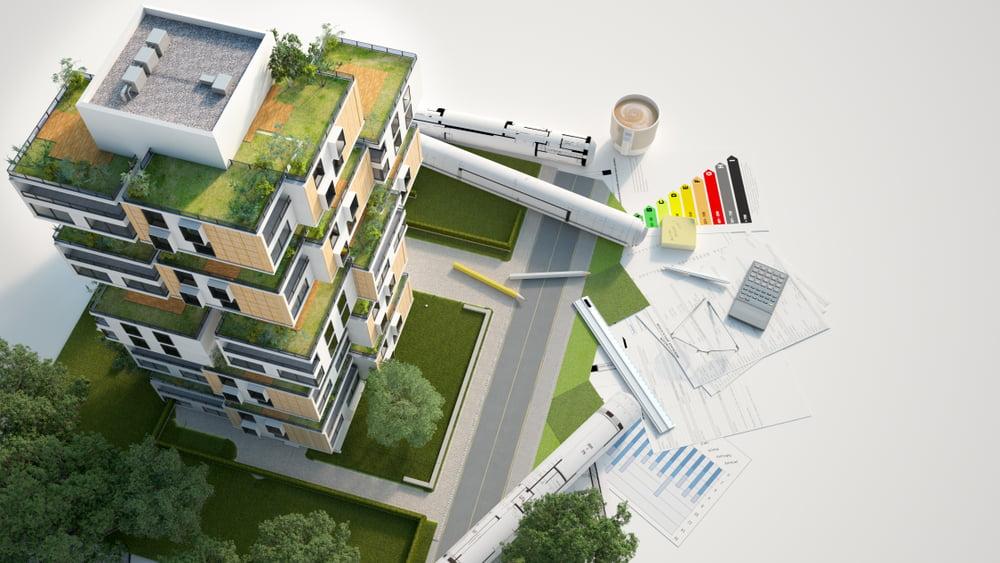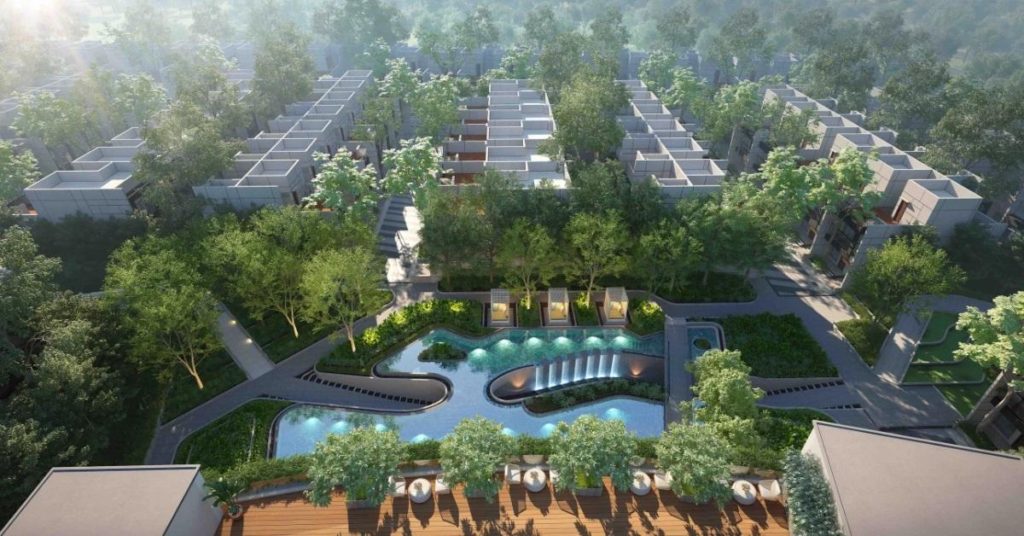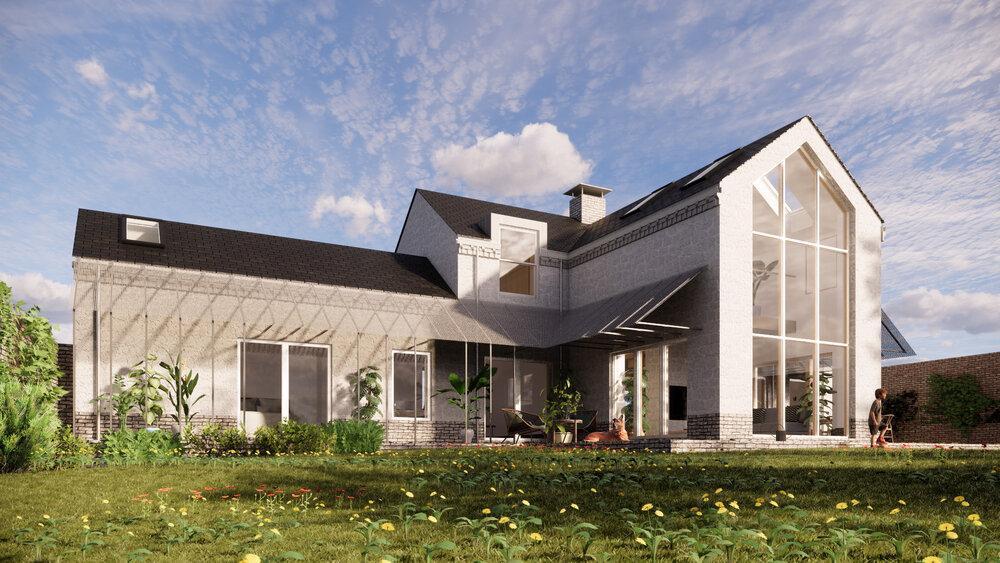Sustainability has become paramount in modern architecture; with a heightened global consciousness regarding environmental challenges, architects progressively embrace eco-friendly principles.
The aim is to craft an environment that captivates aesthetically and bears the profound responsibility of environmental stewardship.
As architects align their designs with eco-friendly principles, they play a vital role in ushering in a new era of construction standards that seeks to harmonise human habitats with the delicate balance of the planet’s ecosystems.
In this blog, we will explore the EcoRight principles, a set of guidelines that promote sustainability in architecture, and how they contribute to a greener built environment.
Ready to make your architectural project a sustainable masterpiece? Discover how EcoRight principles can transform your vision into a greener reality. Contact us and be part of the sustainable architectural revolution!
EcoRight: Designing With Nature In Mind

Sustainability in Architecture: Fundamental Principles
One of the fundamental principles of sustainability in architecture is designing with nature in mind. This means integrating the natural environment into the design process and ensuring that buildings coexist harmoniously with their surroundings.
To achieve this, architects often consider factors like site orientation, landscaping, and the use of sustainable materials.
- Site Orientation: Proper site orientation takes advantage of natural resources such as sunlight, wind, and shade. Placing windows strategically to maximise natural light and ventilation reduces the need for artificial lighting and HVAC systems, thereby conserving energy.
- Landscaping: Sustainable landscaping involves using native plants that require less water and maintenance. It also includes rainwater harvesting systems and green roofs, which can help manage stormwater runoff and reduce the urban heat island effect.
- Sustainable Materials: Choosing sustainable building materials, such as recycled or reclaimed wood, bamboo, and low-impact concrete, reduces the environmental footprint of construction standards. These materials are eco-friendly and contribute to healthier indoor air quality.
EcoRight: Energy Efficiency

EcoRight: Energy efficiency
Energy efficiency is a core component of sustainable architecture. Buildings are responsible for a significant portion of energy consumption worldwide, so designing for energy efficiency can substantially reduce carbon emissions.
- Passive Design: Passive design strategies, such as well-insulated building envelopes, energy-efficient windows, and thermal mass, help regulate indoor temperatures naturally. This reduces the need for mechanical heating and cooling systems, leading to lower energy consumption and costs.
- Renewable Energy: Incorporating renewable energy sources like solar panels and wind turbines can further reduce a building’s reliance on fossil fuels. These systems generate clean energy, decrease greenhouse gas emissions, and may even allow buildings to produce more energy than they consume, contributing to a sustainable future.
EcoRight: Waste Reduction And Recycling

EcoRight: Environmental Impact
Sustainable architecture strongly emphasises minimising construction waste and promoting recycling. The construction industry generates substantial waste, and adopting EcoRight principles can significantly reduce its environmental impact.
- Prefabrication: Prefabrication involves assembling building components off-site and then transporting them to the construction site for assembly. This reduces on-site waste, as materials can be measured and cut precisely, minimising errors and excess materials.
- Recycling: Reusing and recycling materials from demolished or deconstructed buildings can reduce the demand for new resources. Salvaging wood, bricks, and metal components can save money and reduce construction’s carbon footprint.
EcoRight: Water Efficiency

EcoRight: Efficient Water
Efficient water usage is another key aspect of sustainable architecture. With water scarcity becoming a global concern, architects must design buildings that minimise water consumption and incorporate water-saving technologies.
- Low-Flow Fixtures: Installing low-flow faucets, showerheads, and toilets significantly reduces water consumption without compromising user comfort. These fixtures are cost-effective and can lead to substantial water savings over time.
- Greywater Systems: Greywater, which is wastewater from sinks, showers, and washing machines, can be treated and reused for non-potable purposes such as irrigation and flushing toilets. Implementing greywater systems conserves freshwater resources and reduces the burden on sewage treatment plants.
EcoRight: Adaptability And Resilience

EcoRight: Adaptability And Resilience
Sustainable architecture should also consider long-term adaptability and resilience. Building designs must be flexible to accommodate changing needs and resilient enough to withstand environmental challenges.
- Modular Design: Modular construction allows for easy reconfiguration and expansion of spaces as needs evolve. This adaptability can extend the lifespan of a building and reduce the need for demolition and new construction.
- Climate Resilience: Architects should consider the local climate and design buildings to withstand extreme weather events, such as hurricanes, floods, and heat waves. Incorporating resilient materials and construction techniques can mitigate the impact of climate change on the built environment.
Wrapping up incorporating EcoRight principles into architectural design is essential for creating a greener built environment.
By designing with nature, prioritising energy efficiency, reducing waste, conserving water, and emphasising adaptability and resilience, architects can contribute to a more sustainable future.
As the world faces increasing environmental challenges, sustainable architecture is not just a choice; it’s a responsibility. By adopting these principles, architects can help mitigate the impact of the built environment on the planet and promote a healthier, more eco-friendly future for all.
Ready to make a lasting impact on the world of architecture? Dive deeper into the future of sustainable building practices by exploring our range of innovative EcoRight products. Read more: “Innovative Eco-Right products: Paving the way for greener construction.“

